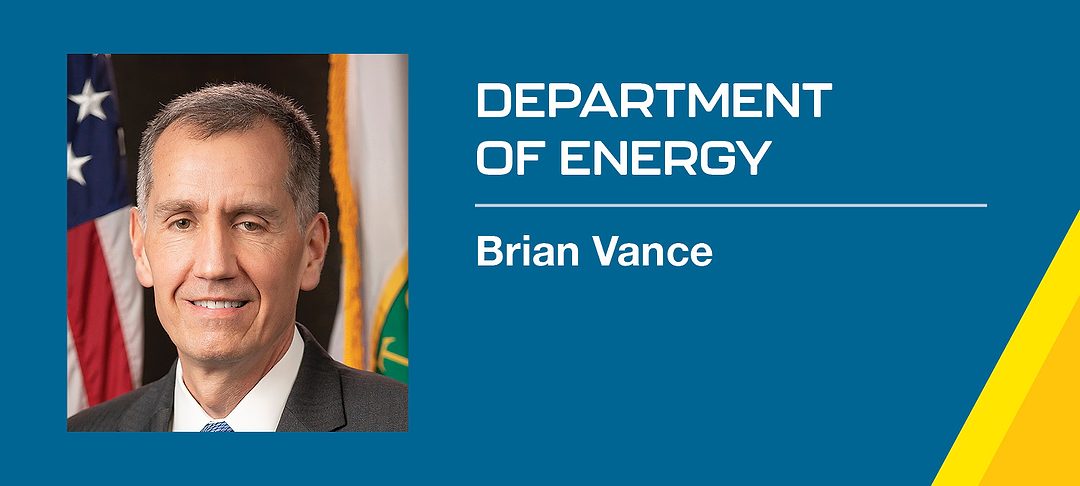
Home » One Hanford team working on project of the century
One Hanford team working on project of the century

April 15, 2020
Hanford is one of this country’s greatest public works projects, both during a national security mission that lasted for more than four decades in the last century and during its current cleanup mission.
Just as our Hanford workforce overcame challenges to deliver for our nation in the past, we are proudly delivering safe, efficient and effective cleanup progress and risk reduction today through teamwork, dedication and innovation.
Our overall cleanup strategy has consistently focused on reducing risks to the Columbia River as we work to establish the capability to treat tank waste on the site’s Central Plateau. In parallel, we have established a strong tank integrity program to ensure the safe stewardship of the waste until treated and a robust infrastructure program to ensure that the utilities and services required to fulfill our mission are ready and reliable, tailored to our needs as the site evolves.
Preparing for the treatment of tank waste is a high priority for the U.S. Department of Energy and contractor team as we approach the start of treatment through the Direct-Feed Low-Activity Waste initiative.
The program represents a sitewide effort made up of not only the Waste Treatment and Immobilization Plant, but also interdependent systems and supporting infrastructure that must operate together to treat the waste at an operational pace not required on the site since the time of the national security mission.
Our sitewide transition to tank waste treatment involves the entire Hanford team. It’s our goal that every person working on the site proudly recognizes their many contributions to an effort that is so important to the Tri-Cities and the Pacific Northwest. Our recent One Hanford initiative is at the center of the site cultural transformation and is intended to foster a unity of purpose that is crucial to sustaining the important progress being delivered.
Looking back at the past year, our progress has created the conditions that support our transition to round-the-clock operations.
Our team finished transferring 35 cubic yards of highly radioactive sludge from a nuclear reactor basin near the Columbia River to safe interim storage on the Central Plateau.
We stabilized an aging waste storage tunnel by filling it with engineered grout, eliminating the risk of a future collapse and the potential to spread contamination.
We also treated more than 2.4 billion gallons of groundwater, removing nearly 90 tons of contaminants.
We resumed retrievals to transfer tank waste to newer double-shell tanks, and we continued the progress at the Waste Treatment and Immobilization Plant, completing startup testing of the laboratory facility and welcoming more than two-thirds of the commissioning technicians who test systems that will support vitrification.
Looking forward, we will complete several major projects to prepare the site to start treating tank waste. In the next two years, we will advance toward treatment operations as we complete the bulk of the construction projects in our Direct-Feed Low-Activity Waste initiative and focus on starting up and commissioning facilities.
We will stabilize aging plutonium-production structures, eliminating the potential to spread contamination from those structures.
We also will continue treating groundwater across the Hanford site to remove contamination and protect the Columbia River.
We are making several shifts and transitions at the site, but perhaps the biggest change is the transition to three major new contracts that encompass most of the cleanup work.
During these contract transitions, we will continue our strong focus on safety. Everything we do at the site is underpinned by our commitment to safety—for our workers, the public and the environment.
Our mission is enabled by a wide and diverse team that includes more than DOE, its contractors and workforce.
The Hanford team is comprised of collaborative and constructive relationships with our community, stakeholders and regulators. The work is challenging, and when faced with adversity, the team looks to innovation and collaboration to get the job done safely.
Like most close relationships, we won’t always agree on everything, but we recognize that safe progress in cleanup is a win for everyone.
We want you all to be proud of the revitalization that has happened and continues to happen on the Hanford site. Just as we have delivered on environmental cleanup in the past, we will continue to deliver solid results for you in the future.
Brian Vance is the manager of the U.S. Department of Energy Hanford site.
Hanford
KEYWORDS april 2020




